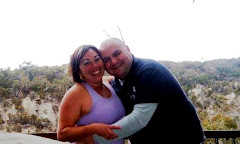





The large, glass-encased entry is the only part of the building above ground. Most of the floor space are underground — right inside of the solid rock walls!

At the GEO CENTRE, we heard stories behind the radical changes that take place in our climate; and the constant, all-powerful influences of the Sun and our Earth’s gravity. And we got to see what lies far beyond our planet, into the far reaches of outer space, where science tells us how our Earth’s future is unfolding.
Even the heating system is unique. The GEO CENTRE is heated by the Earth itself, through holes drilled over 150 metres into the rock, using heat pumps to circulate fluids that heat or cool the building. The GEO CENTRE's main exhibits start off in a state-of-the-art theatre that takes you back through the story of Earth, unleashing the power of volcanoes, earthquakes, and torrential rainstorms- it was really cool and Gordon Pinsent was the narrator!
The rest of the exhibits area is divided into four sections — Our Planet, Our Province, Our People, and Our Future.

The external walls of the Exhibits area are of natural, 550 million year old exposed rock; you can see the features and characteristics of Signal Hill’s geology. On days of heavy rain or snowmelt the fractures and cracks within the rock walls provide natural channels for water migration, so that the walls themselves become wet as water seeps through the rocks.

There are so many beautiful NASA photographs of galaxies, nebulae, distant stars, and other sights from space.


No doubt you have seen me use this figure before (on facebook). It is an Inukshuk.

The Inuit make inuksuit in different forms for a variety of purposes: as navigation or directional aids, to mark a place of respect or memorial for a beloved person, or to indicate migration routes or places where fish can be found. Other similar stone structures were objects of veneration, signifying places of power or the abode of spirits. Although most inuksuit appear singly, sometimes they are arranged in sequences spanning great distances or are grouped to mark a specific place.
These sculptural forms are among the oldest and most important objects placed by humans upon the vast Arctic landscape and have become a familiar symbol of the Inuit and of their homeland.

Now we are off to get married again and then head across the Island to Gros Morne National Park! Talk to you soon!!! xox












No comments:
Post a Comment